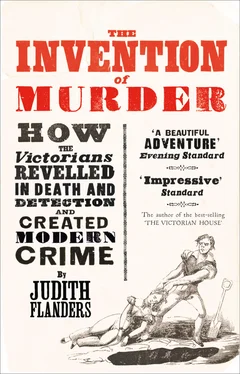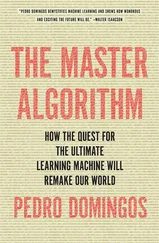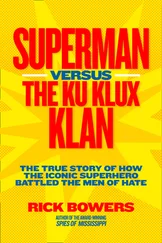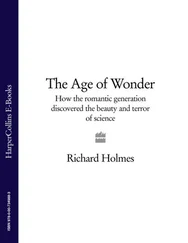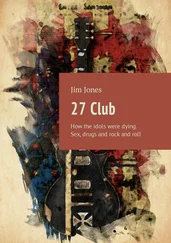Wood should have had no fame at all. He was a waterside character in Wapping, by the London docks, an amiable drunk, a man of no trade or settled way of life. But he was harmless. On the night before his death he was drinking at the White Hart tavern with a friend, his wife and the landlady. According to witnesses at the inquest, a squabble arose over who was to pay for a pint, and this attracted the attention of a policeman, who ‘laid hold of the deceased, and shoved him “right slap” into the street’, where he fell on the pavement. A succession of witnesses agreed that Wood had been knocked down by a policeman, while another constable was seen with ‘a stick in his hand’, and another ‘lift[ed] the man up, whose head fell again to the pavement; the blow was violent’. It was not the first blow, either: the policeman’s hands were ‘stained with blood’. Somehow it took four policemen an hour to carry Wood the 250 yards from the tavern to the police station. A man in the cells saw him dragged by his feet into a cell (‘A deep murmur and expression of horror here burst forth’), where he was left until ten o’clock the next morning, at which point a doctor was sent for. Wood was treated and taken home, but he died that afternoon of a fractured skull caused, said a doctor, not ‘by a lateral fall, but. by a large round stick’.
It was not just the death, but the behaviour of the police and the coroner at the inquest that incensed the population. The police swore that the cells’ other occupant could not have witnessed Wood’s treatment, because he had been discharged at six (said the charge book), or maybe it was 2.30 (the inspector). The police were permitted to sit in the court before they testified, unlike the other witnesses, which meant that they would be able to tailor their evidence. (The coroner stoutly protested that no policeman would think of doing any such thing.) At an identification parade the constables arrived dressed in street clothes, rather than their uniforms – to evade recognition, thought many.
The fractious bickering between jury and coroner continued for thirteen hours on the first day. On the second, four doctors testified that Wood’s fracture had been caused by a truncheon-shaped object. Another witness testified to seeing him being chased by the police, but the coroner refused to accept this evidence, dismissing it as ‘disgraceful’. A juror snapped back, ‘If an honest perseverance to elicit the truth was disgraceful, he would admit that their conduct throughout the whole proceedings was disgraceful indeed.’ The coroner backed down, mumbling that it was ‘the firing and cross-firing’ of questions that he had been referring to, before adjourning the sitting.
On the third day, another twelve hours was spent on the case. A number of policemen testified to the very great care they had lavished on the unconscious Wood. One ‘burst into tears, and said he had an aged mother, whose feelings had been much hurt by his name being mixed up with the affair’. A juryman, unmoved, asked him if it were not true that he had previously ‘broken a man’s head with his truncheon’. The coroner refused to let him answer the question, and the court was adjourned in uproar once again.
On day four, a witness agreed with the police account, testifying that she had seen Wood carried carefully. On cross-examination, however, it was found that her evidence matched nothing that anyone else had seen that night, that it followed a private interview with the police inspector before the hearing, and furthermore that she had been seen drinking with another policeman only that morning. The coroner said he had received a note suggesting that Wood’s head ‘might have been accidentally struck against a beam at the entrance of the station-house’, but even the police agreed that that was not possible, and ‘the Foreman of the Jury observed – “The writer of the note must have had a beam in his eye.” ‘
On the fifth day, a witness who testified against the police was so confused and contradictory that the jury showed their independence of mind by saying they refused to believe a word. The solicitor watching proceedings for the police leapt up and asked that the witness be committed for perjury, at which the jury noted sourly that none of the police witnesses who had obviously lied had been so threatened. The coroner, not knowing when to let well alone, smugly commented, ‘I hope that the eyes of the Jury are now opened. I cannot but say from my heart, that there is not a tittle of evidence that can be relied on against the police: not a tittle that can be placed in comparison with the manly, straightforward evidence given by the police themselves … I cannot help saying, that since the Court was opened, the Jury have pursued a course such as I have never before witnessed in the course of my life, and such as I hope never to see again.’ The jury cried, ‘“Shame, shame!” and with clenched fists approached the Coroner … An indescribable scene of confusion followed. The people in the room united in the vociferations of the Jury, and the crowd in the street. expressed their approbation by loud shouting and clapping of hands.’ The coroner realized the position he’d put himself in, and added hastily, ‘I feel deep sorrow for having expressed myself in a manner disagreeable to the Jury, whose conduct, it is my duty to state, as far as the ends of truth and justice are concerned, does them great credit: I did not mean in what I said to censure them morally.’ The jury were having none of it, and the foreman responded: ‘We stand here as honest men, having characters to support, and I can say before God, that I came into this room unbiassed against the police. Nothing that can be said to us, in the way of censure, can affect our verdict. If we are to be taxed with having a bias against the police, I, for one, would lay down my fine of 10l. [for refusing jury service], and walk home.’ Then the coroner tried to speak, but one of the jury interrupted him: ‘You have called us biassed men; we have been ill treated by you individually and collectively: your conduct has been most partial [great confusion].’ The inquest was once more adjourned.
When it resumed, the coroner finally summed up: ‘When I found that some members of the Jury endeavoured to degrade my office [the Jury here exclaimed that they did not], and to impugn my impartiality – when I perceived the spirit of persecution in which the examinations were conducted [cries of ‘No, no!’], and the intemperate manner in which all interference on behalf of the police was resisted – I felt bound by every obligation … to extend the broad shield of the Judge over the devoted heads of the policemen, and protect them from the cruel inquisition to which they were exposed.’ He then admitted that he might have been led into ‘some warmth of expression’, which he regretted. The jury took three hours to consider their verdict (this in an age when death sentences were routinely agreed in twenty minutes), returning with a verdict of ‘Wilful Murder against some policeman unknown’, adding a rider that the death certificate should be altered to read ‘We are of opinion [sic] the murder was committed with a truncheon by a policeman of the K Division.’ The coroner responded coldly: ‘The verdict is yours, and not mine, and on you rests the responsibility.’
And there the case rested: no one was ever identified, so no one was ever charged. But a few weeks later, the House of Commons reported on Popay, condemning his behaviour as ‘highly reprehensible’ and blaming his superiors for their lack of proper supervision. The public too made its feelings known: on Guy Fawkes Night, the two police commissioners, Richard Mayne and Charles Rowan, were burnt in effigy on local bonfires, together with a third guy, labelled ‘Justifiable Homicide’.
Читать дальше
